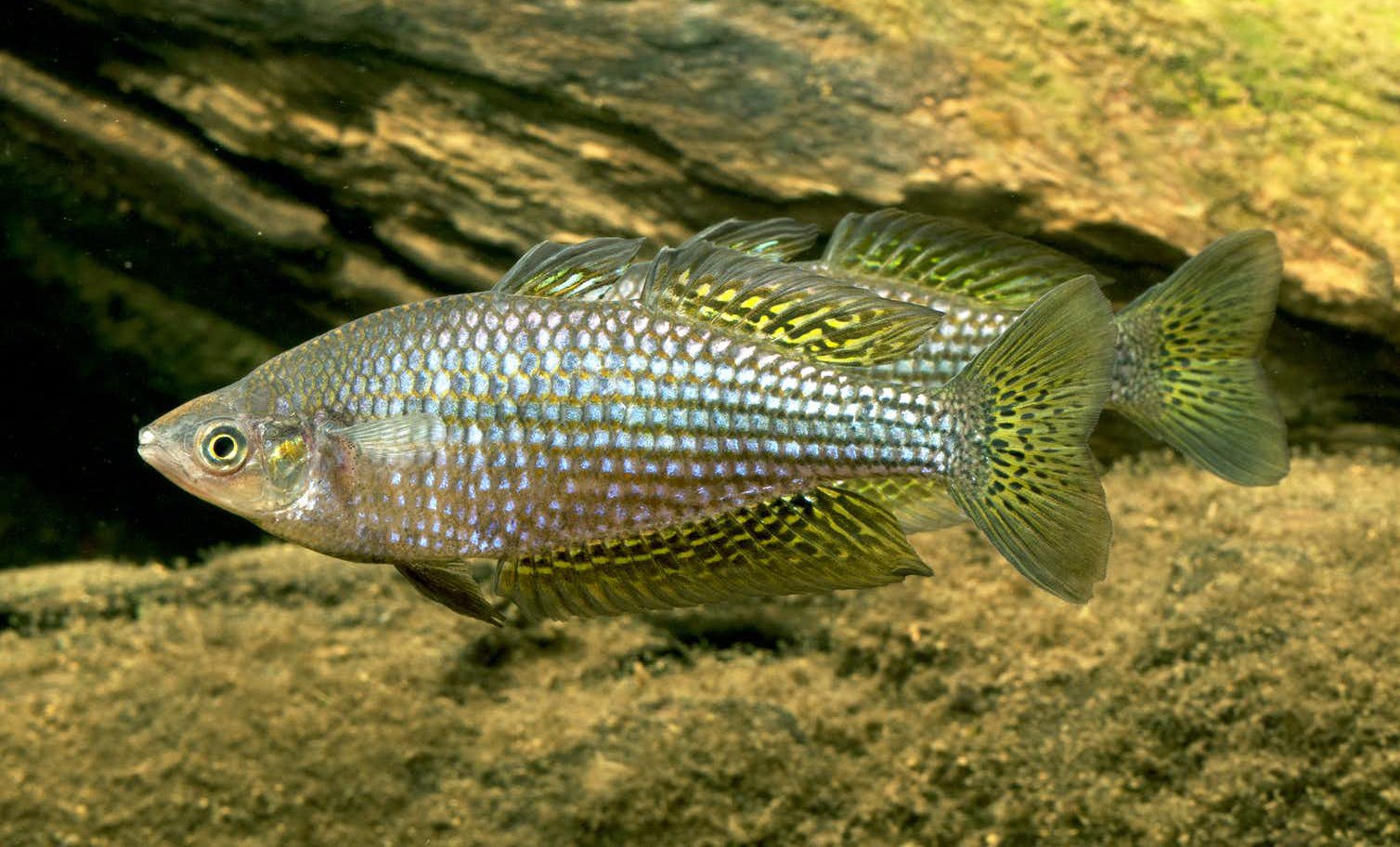Desert Rainbowfish
The desert rainbowfish is a mysterious and vibrant fish species that captures the imagination of anyone who has ever laid eyes on its colorful and unique appearance. This fish's fascination with adapting to the scorching desert environment of Australia makes it a subject of awe and interest for both biologists and enthusiasts alike.
Desert Rainbowfish: An Overview
Found in isolated pools of rocky streams in the dry Australian outback, the desert rainbowfish (Melanotaenia splendida) is a small freshwater fish that belongs to the Melanotaeniidae family. It gets its name from its beautiful and vibrant colors, which fluctuate from dark blue to golden yellow and even reddish-orange. The desert rainbowfish approximately grows from 5-7 cm, and its dietary routine includes small insects and crustaceans.
Due to its ability to survive in extreme environmental conditions, desert rainbowfish have become a well-studied species among the scientific community. Their survival tactics include adapting to changes in their environment, such as low oxygen, high salinity, and severe temperature changes. Furthermore, the desert rainbowfish's distinct evolutionary adaptations allow them to change their behavior and body function to endure in the changing weather conditions.

The desert rainbowfish's breeding behavior is also unique. They have the ability to store sperm for prolonged periods, making them adaptable to mate in a more seasonal climate. They also exhibit polygamous mating and live birth strategies that significantly impact their survival rates in a harsh desert environment.
Adaptations and Characteristics of the Desert Rainbowfish
Desert rainbowfish have many adaptations that allow them to flourish in austere environments. Their ability to withstand high water temperatures and low oxygen levels is made possible through their unique body structure and function. Their elongated body shape provides them with better maneuverability in the rapid flowing water, while their relatively large fins help in better balance and stability. Additionally, the presence of large eyes helps them to assess predator danger, forage for food, and locate potential mates.
Moreover, the desert rainbowfish also exhibits some physical changes in their body structure apart from physiological evolution to survive in Australia's harsh environment. During the dry season, they shift from eating small aquatic invertebrates to more common terrestrial insects like ants and bees. This nutritional shift is a unique adaptation of this species that helps them to sustain in their natural habitat.
What is the Target of the Desert Rainbowfish?
The knowledge of a desert rainbowfish's target is crucial when it comes to understanding this species. The fish is the target of many predators in the ecosystem, including birds, snakes, and lizards. The stress of daily predator encounters is the primary factor that determines their survival rate in the outback. Additionally, fishing and loss of natural habitats due to climate change also pose severe threats to the population of desert rainbowfish.
Desert Rainbowfish: Q&A
Can Rainbowfish survive in a hot environment?
Yes, the desert rainbowfish can survive in a hot environment. They have adapted to the extreme hot, dry nature of their native habitat by shifting their metabolic and reproductive behaviors to fit extreme ecosystem stressors; the tank temperature should be kept ideally between 26 and 27 degrees to support the fish's survival in a home aquarium.
How many types of Rainbowfish exist?
There are many types of rainbowfish, over 50 subspecies exhibit both common and unique physiological and behavioral adaptations. Some of the different rainbowfish species include Boesemani, Neon, Dwarf Neon, and several others.
How long does Desert Rainbowfish Live?
Desert rainbowfish have an average lifespan of around 5-7 years, depending on various environmental and genetic factors. With proper care, the fish may live several years beyond this expected average.
Conclusions
The desert rainbowfish shines as a beautiful and intriguing species that has adapted remarkably well to the harsh climate of outback Australia. Understanding the unique evolutionary adaptations and ecological factors that play a crucial role in the survival of the desert rainbowfish helps us appreciate and admire the species' exceptional tenacity. However, with increasing threats to its natural habitat, it is important that we take steps to preserve their existence and protect their habitat from further destruction.
